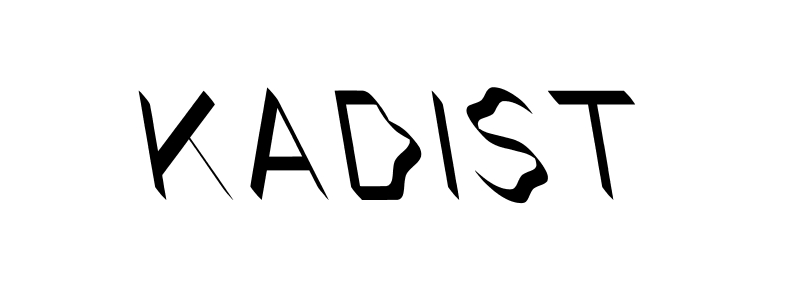Hako
2006 - Film & Video (Film & Video)
Hiraki Sawa
Hako (2006) depicts a mysterious and dystopic landscape where the world becomes flat: distance between different spaces, depth of field and three-dimensional perceptions are canceled. Interiors of a Victorian doll’s house, a rippled seascape, a palm tree forest, and a gravel seashore are superimposed, morphing into each other. The hermetic narrative is charged with psychological and mythological aspects. Hako reflects Sawa’s interests in psychotherapies, in particular, the sand tray therapy, also known as sandplay, created by Dora Kalff. Sandplay asks participants to create their own arrangement of objects in a sandbox by choosing from a wide range of small figures to which the subconscious attaches symbolic meanings. Echoing this process, Sawa creates his imaginary dimensions where rules and selected elements allow for improvisation and play to reveal unconscious processes. Certain elements give visual clues and metaphorically comment on issues such as the hybridity of the human and the non-human. This is indicated by walking trees and a miniature toy clock that is animated to keep real world time in order to ponder the illusionary concept of linear time. Reality is not scientific. As the fantastical becomes everyday and the supernatural becomes commonplace, so does the reverse.
London-based Japanese artist Hiraki Sawa’s video installations and filmic works probe landscapes, psychological dreamlands, domestic interiors, imaginary spaces, ideas of displacement and migration, and above all, the inner self. He weaves animals, people, plants, animated and inanimate objects into a series of surreal sequences to create enigmatic and immersive worlds of sound and image. Employing a combination of digital editing and hand-made methods of cutting, pasting and collaging, Sawa highlights the ambiguous boundaries between facts and fictions and meditates on how remembrance and memory can be manipulated by time, emotion and mental influences.
Colors:
Related works featuring themes of: » Contemporary Surrealistic, » Film/Video, » Installation Art, » Japan, » Japanese

© » KADIST
Tomoko Yoneda
2010Yoneda’s Japanese House (2010) series of photographs depicts buildings constructed in Taiwan during the period of Japanese occupation, between 1895 and 1945...

© » KADIST
Koki Tanaka
2009Walking Through is one of a series of videos—sometimes humorous, often absurd—that record the artist’s performative interactions with objects in a particular site...

© » KADIST
Runo Lagomarsino
2020Yo también soy humo (I am also smoke) is a 16mm film that has been digitized to video...

© » KADIST
Tuan Andrew Nguyen
2012This work presents the image of an immolated monk engraved on a baseball bat...

© » KADIST
Clarissa Tossin
2012In Fordlândia Fieldwork (2012), Tossin documents the remains of Henry Ford’s rubber enterprise Fordlândia, built in 1928 in the Brazilian Amazon to export cultivated rubber for the booming automobile industry...

© » KADIST
Yoan Capote
2007Open Mind is a model created by Capote for a traversable public maze that, when seen from above, resembles the human brain...

© » KADIST
Naoya Hatakeyama
Naoya Hatakeyama’s series Rikuzentakata (2011) documents the devastating aftermath of the 2011 Tohoku earthquake and tsunami in Japan...

© » KADIST
Nicolás Consuegra
2014Consuegra’s Colombia is a mirror made in the shape of the artist’s home country—a silhouette that has an important resonance for the artist...

© » KADIST
Yin-Ju Chen
2018Extrastellar Evaluations is a multimedia installation produced during Yin-Ju Chen’s residency at Kadist San Francisco in the spring of 2016...

© » KADIST
Cerith Wyn Evans
2008Untitled (Perfect Lovers + 1) by Cerith Wyn Evans takes as its starting point Felix Gonzales-Torres’s seminal work Untitled (Perfect Lovers) , in which two clocks were synchronized and left to run without interference, the implication being that one would stop before the other...

© » KADIST
Xiaoyun Chen
2006State Terrorism in the ultimate form of Pre-Raphaelite Brotherhood features a portrait of the artist wearing a zipped utilitarian jacket reminiscent of a worker’s uniform, with one arm behind his back as if forced to ingest a bundle of stick—a literal portrayal to the definition of fascism...

© » KADIST
Oded Hirsch
2012Oded Hirsch’s video work Nothing New (2012) utilizes seemingly absurdist tropes to raise more trenchant questions about communal action and collective identity in modern day Israel...

© » KADIST
Nicolás Consuegra
2012A residency program in the blazing hot city of Honda, Colombia, inspired artist Nicolás Consuegra to consider the difficulty in understanding the needs of a distant community...

© » KADIST
Koki Tanaka
2010Tanaka’s unique understanding of objects and materials is reflected in the four photographs that document his Process of Blowing Flour ...

© » KADIST
Pak Sheung Chuen
2008Pak created New York Public Library Projects (NYPLP) (2008) during a residency in New York, using public libraries as exhibition spaces and the books they house as raw materials...

© » KADIST
Xiaoyun Chen
2012The lengthy titles in Chen Xiaoyun’s work often appear as colophons to his photographs that invite the viewer to a process of self realization through contemplating the distance between word and image...

© » KADIST
Doug Aitken
2009The version of Frontier acquired by the Kadist Collection consists of a single-channel video, adapted from the monumental installation and performance that Aitken presented in Rome, by the Tiber River, in 2009...



